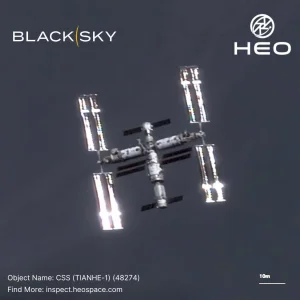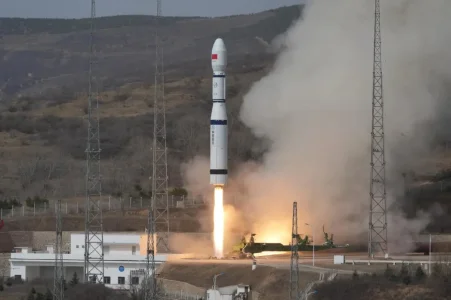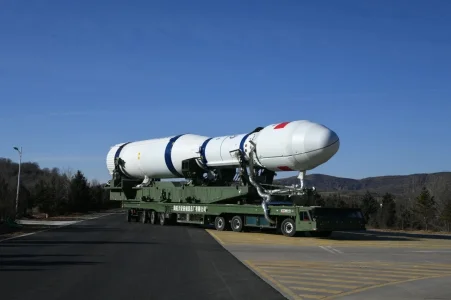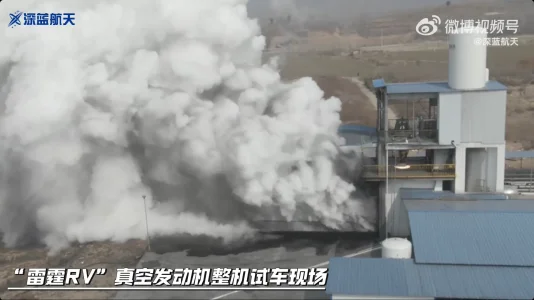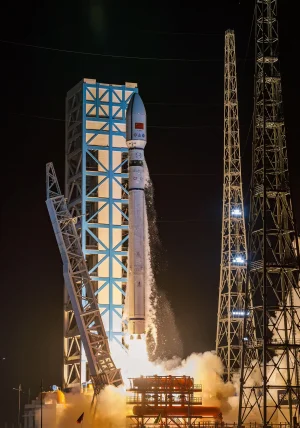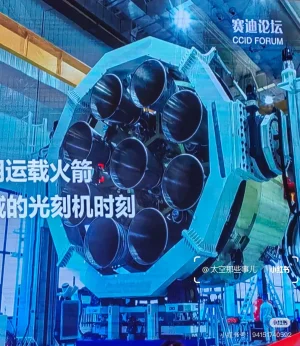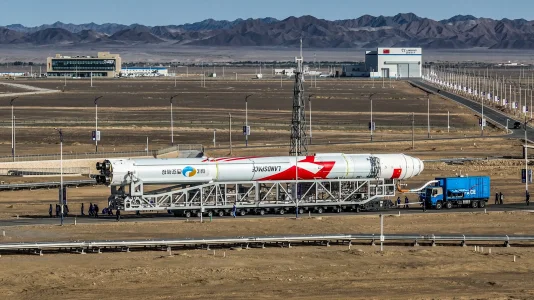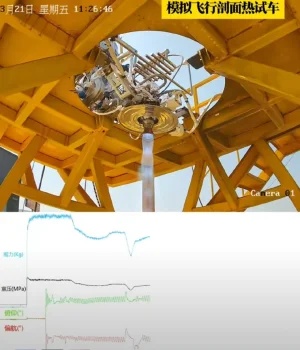- Joined
- Apr 1, 2025
- Messages
- 7
- Likes
- 4

China Space Station Tiangong
HELSINKI — China and Pakistan have signed an astronaut training agreement that could see the first international astronaut arrive at the Tiangong space station.
The China Manned Space Engineering Office (CMSEO) and the Pakistan Space and Upper Atmosphere Research Commission (SUPARCO) signed the “Agreement on the Selection and Training of Pakistani Astronauts and Their Participation in China’s Space Station Missions” in Islamabad, Pakistan, Feb. 28, CMSEO announced.
The signing ceremony took place at the Prime Minister’s Office and was witnessed by Pakistani Prime Minister Shahbaz Sharif, Lin Xiqiang, deputy director of CMSEO, and Mohammad Yousaf Khan, chairman of SUPARCO.
The agreement marks the first time that China will select and train international astronauts, with a Pakistani astronaut to later fly to the Chinese space station.
According to the plan, the selection process will be completed within approximately one year, after which the Pakistani astronaut will undergo comprehensive and systematic training in China, according to the CMSEO statement.
“Pakistani astronauts will be arranged to enter the Chinese space station with Chinese astronauts to perform short-term flight missions in the next few years,” the CMSEO statement read.
Tiangong is a three-module space station constructed across 2021 and 2022, and was the ultimate goal of a Chinese plan approved in 1992 to develop human spaceflight capabilities.
The space station has so far hosted seven three-person crews of Chinese astronauts during its construction and operational phases. These range from Shenzhou-12, launched in June 2021, to the ongoing Shenzhou-19 mission.
It is unclear how the astronaut will take part in a short-term mission. Shenzhou missions to Tiangong are typically six months long, with three crew members required to operate the station. China has stated plans exist to expand Tiangong to six modules, and send a larger new-generation crew spacecraft to Tiangong on the new Long March 10 launcher.
The development is part of China’s broader space diplomacy efforts, as well as the Belt and Road Initiative, says Bleddyn Bowen, an associate professor in Astropolitics at Durham University in the United Kingdom.
“It certainly fits into China’s wider Belt and Road Initiative which Pakistan is a major part of, and the larger messaging China deploys around its role as a supplier of high technology capabilities for the developing world or “Global South,”” says Bowen.
The agreement will benefit both China and Pakistan, positioning the former as a leader in space, while providing otherwise unobtainable opportunities to the latter.
“Many smaller or poorer states want to participate in space programs and this is a high level, symbolic demonstration that China can be that platform and bigger partner for smaller space powers,” says Bowwen.
“This is a successful outcome for the Pakistani Government as it can show a pathway for Pakistan’s science and technology industries, sectors, and enthusiasts that it can participate in larger space missions despite never being able to muster the same kind of resources as its perennial rival, India” Bowen added.
The development will also be noted by other space-faring nations, including China’s rivals in space.
The U.S., as the lead for the International Space Station (ISS), is aiming to deorbit the orbital outpost in 2030. However, Elon Musk, SpaceX Chief Executive and close advisor to the U.S. President Donald Trump, has recently called for deorbiting the ISS “as soon as possible.”
NASA ISS transition plans include getting commercial space stations by 2030. Executives at companies engaged in commercial space station plans have, however, called for NASA and Congress to take fiscal and policy steps to avoid a space station gap which they fear could cede leadership in low Earth orbit to China. India will likewise take note of the development.
“India and the U.S., like China, have long sought to use their respective space programs to attract partners and participants that also meet foreign policy and diplomatic goals,” said Bowen.
“India particularly has long seen itself as the champion of the developing or Third World in space. I would watch closely to see if India will offer an early slot on their imminent human spaceflight and space station program to another country,” he added.
